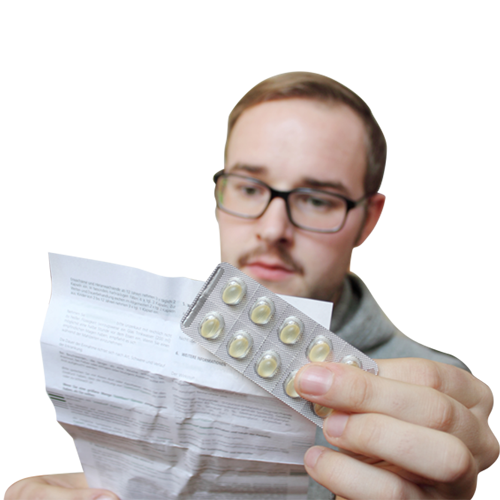Do you need to take an anticoagulant and have concerns about its use? These medications are safe and beneficial, with a few precautions.
Anticoagulants
Clotting is the mechanism that allows blood to form a plug (clot) at the site of an injury, thus stopping the bleeding.
While this mechanism is beneficial in the event of injury, it can sometimes cause inconvenience. Blood clots can form in non-injury situations and can lead to significant complications, such as:
- cerebrovascular accident (CVA or stroke)
- myocardial infarction (heart attack)
- pulmonary embolism (blood clot in the lung's blood vessels)
- deep vein thrombosis
Various risk factors, such as heart arrhythmia (atrial fibrillation), the presence of a heart valve or certain surgical procedures may predispose a person to these complications and lead to the need to take an anticoagulant. This type of medication helps prevent clots from forming by blocking the action of certain clotting factors.
Types of anticoagulants
There are two main types of anticoagulants: injectable and oral.
However, in general, oral anticoagulants are most often used. The best known is warfarin, marketed under the name Coumadin®. Also in this category are apixaban (Eliquis®), dabigatran (Pradaxa), rivaroxaban (Xarelto®) and edoxaban (Lixiana®). The choice of an anticoagulant depends on several factors, including:
- the medical reason for its use
- your age
- the health of your kidneys
- other medications you are taking
The risk of bleeding
Because anticoagulants work by interfering with the clotting process, their main side effect is to increase the risk of bleeding. Although bleeding is usually mild, transient and not serious, it is important to mention that you are taking an anticoagulant to any healthcare professional you meet (your dentist, for instance). Wearing a medical bracelet is also recommended.
In some cases, the use of anticoagulants can cause serious bleeding complications. However, this risk is minimized when the dosage and medical recommendations are followed.
Bleeding can occur in several areas of the body and can manifest itself in various ways, including the following signs or symptoms:
- blood in the urine (pink or reddish urine)
- dark or bloody stools
- vomit that is brown (coffee bean-like) or contains blood
- unusual bruising (e.g., that appears without reason)
- red sputum when coughing
- persistent nosebleeds
- severe pain in the head or abdomen, and
- a cut that keeps bleeding
If there is any unusual bleeding, a medical professional should be consulted. Note that a head injury (from a blow or fall) should always be evaluated by a doctor as soon as possible.
The particularities of warfarin
Rivaroxaban, dabigatran, apixaban and edoxaban have a predictable anticoagulant effect at a given dose. Tests or blood samples are not required to measure the anticoagulant effect of the drug.
For warfarin, a blood test is necessary to ensure the anticoagulant effect and therefore determine if the dose is too high (risk of bleeding) or too low (risk of clotting). Therefore, if you are taking warfarin, have your blood tests done regularly.
Be careful! Regardless of the treatment, the doctor must also periodically assess your health.
Anticoagulants and interactions
Many prescription, over-the-counter and natural products can interact with anticoagulant drugs.
Some advice
Here is some additional information on the safe use of an anticoagulant:
- Avoid activities that may cause shocks or blows, such as contact sports.
- Be especially careful when handling sharp objects (scissors, knives, blades, etc.).
- Use an electric razor instead of a manual razor blade.
- Use a soft-bristled toothbrush to avoid bleeding gums.
- If you cut yourself, apply pressure on the injury site until the bleeding stops.
- Always follow the dosage prescribed by your healthcare professional.
Your pharmacist as a safety ally
Taking an anticoagulant requires certain precautions to ensure its safe use. Rather than worrying, ask your pharmacist for advice.

